- About Us
- Columns
- Letters
- Cartoons
- The Udder Limits
- Archives
- Ezy Reading Archive
- 2024 Cud Archives
- 2023 Cud Archives
- 2022 Cud Archives
- 2021 Cud Archives
- 2020 Cud Archives
- 2015-2019
- 2010-2014
- 2004-2009
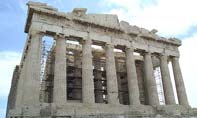 |
The Literature of the Greeks in Australia: |
Over the past 100 years, the Greeks have developed a vibrant literary presence in Australia.
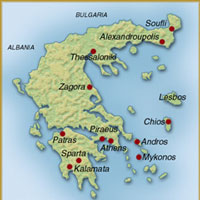 From a historical perspective the oldest evidence that I have located during my many years of research dates back to the end of the first decade of the twentieth century. It consists of oral poetic compositions. The primary reason for this was that most of the early versifiers came from Greek areas with a long'established oral tradition, as happened with the two first versifiers, Nikos Kallinikos and Nikos Paizis, both from the island of Ithaca.
From a historical perspective the oldest evidence that I have located during my many years of research dates back to the end of the first decade of the twentieth century. It consists of oral poetic compositions. The primary reason for this was that most of the early versifiers came from Greek areas with a long'established oral tradition, as happened with the two first versifiers, Nikos Kallinikos and Nikos Paizis, both from the island of Ithaca.
In the first decade of this literature (1910'1920) oral poetry (Greek'language) dominated, and while this decreased in the following decades, it did not die, especially if one considers the improvised compositions of immigrants of modern times, such as the Ithacan Stathis Raftopoulos, the Cypriot Haralambos Azinos and the Cretan Kostas Tsourdalakis.
The characteristic of these early oral improvisations is that they were born and developed not in the isolation of the creator's room but out in the community, such as at family celebrations, public social gatherings and entertainments and in the coffee'houses.
This poetry, of course, for the most part was neither pioneering nor of high demands. It was unpretentious versification, the technical achievement of which was limited to the traditional rhyming line, and it reflected little lyricism. However, apart from the historical and any kind of literary interest, these improvisations which were inspired by the stimulation of the moment have additional significance because of the social role they played in the Greek communities of the time with their spontaneity, their sincerity and the enthusiasm of their creators to entertain their audiences or even to make social commentary rather than to create lasting poetic works. After all, these were the characteristics that made this literary genre very popular.
Finally, this oral poetry has its merit even from a philological aspect. It provides the first expression of personal style and signifies the beginnings of the Greek literary presence in this continent of the South.
Correspondingly, in the written form the earliest published works were prose pieces (Greek'language short stories) by the Cypriot George Nicolaides, which appeared in 1913, two or three years after the first oral versifications and just twenty'eight days after the circulation of the newspaper Afstralia, the first Greek newspaper in the Antipodes.
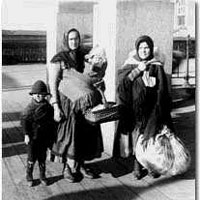 So, 1913 was a turning point for the literature of the Greeks in Australia, because of the following four significant events: a) the first evidence of written literature, b) the first prose pieces that are known, c) the first published literary works, and d) the appearance of the Greek press which also provided an avenue for the publication of poetry and prose works.
So, 1913 was a turning point for the literature of the Greeks in Australia, because of the following four significant events: a) the first evidence of written literature, b) the first prose pieces that are known, c) the first published literary works, and d) the appearance of the Greek press which also provided an avenue for the publication of poetry and prose works.
Two years later the first written poetry (although not yet published) would come to be added to the early literary tapestry of the Greeks in Australia. Its pioneer was the Ithacan lyrical poet and man of the theatre, George Paizis. Although his first poems go back to 1915, he started publishing several years later in 1922, in the Sydney newspaper To Ethniko Vima (The National Tribune), usually under the pseudonym "Thiakos". Many of his poems remind us of the Romantic School of Athens at the beginning of the twentieth century.
From 1922 the literary body expanded due not only to the increase in Greek immigration caused by the arrival of refugees from Asia Minor because of the dramatic events which occurred to the Greek population there at that time, but also because of the new cultural atmosphere and dynamism they brought with them. These new immigrants, often educated in the Greek schools of Smyrna and Constantinople, not only enriched the social, cultural and political life of the Greek communities in Australia with new energy but also introduced new subjects to this literature (the Asia Minor catastrophe, the destruction of Smyrna, the tragedy of the Greek refugees, etc.). It is from among these Asia Minor refugees and other Greek immigrants who were uprooted because of poverty and political upheavals in Greece, that a new generation of writers appeared who conveyed new messages and expressed the feelings of the changing times. As a result, the late 1920s and the 1930s witnessed the development of this literature in both quantity and quality, especially in prose which expanded from short stories all the way to autobiographies and travelogues.
Now a number of writers were consciously investigating, sometimes with impressive sensitivity, broader subjects beyond the confines of the Greek community. In addition, these writers frequently published their texts in the Greek'language press, while some of them forged ahead with publishing works in book form.
So, these years saw significant literary events: a) the publication in Australia of the first Greek'language literary book (the short story collection Istories tis xenitias [Stories of the Foreign Land] (1932) by the Athenian Homer Rigas, published in Sydney by the publishing arm, "Intellectual Beacon of Hellenism in Australia", of the newspaper To Ethniko Vima, b) the development and stabilisation of the Greek press, a fact which encouraged the further writing of literary works, and c) the appearance of writers (although few in number) who for the first time wrote in both languages (Greek and English). Actually, some English'language texts even appeared in Australian publications, such as short stories by Anagyros Fatseas of Kythera in the Sydney periodicals Woman's Weekly and Woman's Day, as well as the earliest translation in Australia of Dionysios Solomos' "Hymn to Liberty" published in the Sydney newspaper Sun (5 March 1941) and poems by Costas Malaxos'Alexander of Phoenikas, Asia Minor, in the Western Australian periodical Black Swan and in the newspaper of the University of Western Australia Pelican.
Additionally, in parallel with the traditional themes (xenitia, odysseic dream of return to the native land, love for the home country, community characters and life in the new environment, etc.) new subjects made their appearance.
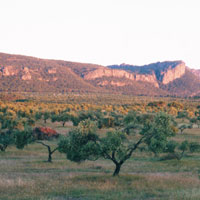 Similarly, while many writers continued to use traditional forms, new endeavours were made in search of poetic forms not used in the past, such as the sonnet, with the main exponents being Theodore Georgantopoulos from Akrata who composed Greek'language sonnets and the previously mentioned Asia Minor refugee Costas Malaxos'Alexander who composed sonnets in English.
Similarly, while many writers continued to use traditional forms, new endeavours were made in search of poetic forms not used in the past, such as the sonnet, with the main exponents being Theodore Georgantopoulos from Akrata who composed Greek'language sonnets and the previously mentioned Asia Minor refugee Costas Malaxos'Alexander who composed sonnets in English.
The outbreak of World War II had, as is well known, a very strong impact upon the Greek communities of the diaspora, including that of Australia. The heroic struggle of the Greek army against the Axis powers invigorated the patriotic feelings of the Greek writers in Australia and stimulated new subjects, such as the united struggle of Greek and Australian soldiers against the common enemy, the fall of Australian soldiers on Greek soil, the resistance movement against the enemy occupation, etc.
The literary production of the war and early post'war years includes poetry, prose (mainly short stories, travelogues, feature articles in literary style) and some literary translations, mainly short stories and poems from Greek into English and poems from English into Greek. Finally, in 1943 the first poetry collection Eleftherias Apanthisma [Anthology on Liberty] by the poet Stathis Raftopoulos circulated in Melbourne.
Moreover, an interesting characteristic of the first post'war years is the appearance of prose writing for children in the Greek press, especially from 1950 onwards. In 1954 the first school text prepared especially for Greek children in Australia was published in Sydney. EntitledDidaktika anagnosmata kai diigimata [Educational Readings and Short Stories] it was written by Anargyros Fatseas, a Sydney resident since 1924, and contained poems and prose pieces written by him on historical, geographical, social and other subjects about Greece and Australia. It also included poems by eminent writers of Greece in the original, accompanied by his own English translation.
In general, during these years, beyond the large numbers of unpublished literary works, many others appeared in the pages of Greek newspapers. A general observation regarding the literary efforts of this period is that, although some interesting pieces of work (especially short stories) made their appearance which leave us with a lasting impression, in the majority they continued being of traditional form and style and did not succeed in bringing the revival which was so necessary.
The year 1952 was a turning point in the history of Greek immigration to Australia because of an agreement signed between Australia and Greece, according to which Australia would assist Greeks who wished to immigrate to this country. The result was a massive exodus of Greeks from all over Greece in the years which followed, a demographic event which, in parallel, on the one hand generated new vitality for the further marked development of Greek literary production in Australia and, on the other hand, significantly increased the reading audience. In general, now the writers appear more dynamic and more productive, while, for the first time, we have before us a broad spectrum of literary genres. The works (poetic and prose) vary from those of traditional form all the way to the purely experimental. In 1954 we also have the first novel, Daphne Miller, which was published in Greek in Melbourne by the Cypriot Costas Athanassiadis who later settled in the USA.
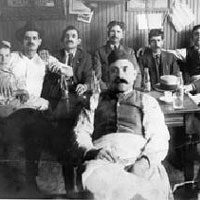 Regarding poetry and prose in the English language, the last few decades have witnessed an exceptional increase and maturity. It is interesting that these works are written mainly by Australian'born individuals of Greek origin who write only in English, rather than by bilingual writers as happened in the past. Some notable contemporary exceptions are Dimitris Tsaloumas and the multilingual Aristides Paradissis, both of Melbourne, and Vasso Kalamaras of Perth. Furthermore, quite a large number of these poetry and prose works (Greek' and English'language) have been published by well known Greek, Australian and international publishing houses.
Regarding poetry and prose in the English language, the last few decades have witnessed an exceptional increase and maturity. It is interesting that these works are written mainly by Australian'born individuals of Greek origin who write only in English, rather than by bilingual writers as happened in the past. Some notable contemporary exceptions are Dimitris Tsaloumas and the multilingual Aristides Paradissis, both of Melbourne, and Vasso Kalamaras of Perth. Furthermore, quite a large number of these poetry and prose works (Greek' and English'language) have been published by well known Greek, Australian and international publishing houses.
As mentioned earlier, the first initiatives in children's literature were made in 1950. However in reality this field started shaping into a literary genre during the decade of the 1980s with a small but cohesive number of works in both Greek and English language appearing ever since.
 Thematically, the picture projected is increasingly multidimensional. With the passage of the years, the themes of earlier times which had derived from the traumatic experiences of immigration, have diminished dramatically, and now as the Greeks have felt socially and psychologically more at ease, the more they have felt themselves to be an inseparable part of the broader mainstream Australian society. As a result, their subjects have broadened impressively, today moving not only on an Australian level but also on a wide'ranging international one.
Thematically, the picture projected is increasingly multidimensional. With the passage of the years, the themes of earlier times which had derived from the traumatic experiences of immigration, have diminished dramatically, and now as the Greeks have felt socially and psychologically more at ease, the more they have felt themselves to be an inseparable part of the broader mainstream Australian society. As a result, their subjects have broadened impressively, today moving not only on an Australian level but also on a wide'ranging international one.
Despite all this, there must be acknowledged that the flowering of the literature of the Greek people in Australia, especially since the decade of the 1970s, owes a lot to the encouragement and the financial support of the official Australian policy of multiculturalism, as well as to the general multicultural climate it sparked in the entire country.
In conclusion, viewing the literary creation of the Greeks in Australia from its first hesitant steps at the beginning of the twentieth century until today, we see that, passing through many stages of development and transformation, it has expanded from a one'dimensional body of oral poetry of exclusively community content to a multidimensional Greek' and English'language literary presence, the latter increasing steadily and significantly. Additionally, this literature which is constantly enriched, on the one hand by the influences and the literary vitality of Australia, and on the other hand by the unbreakable ties with the literary tradition of Greece, but also by international events and movements, finds expression in a variety of genres with a broad spectrum of themes, styles, linguistic structures and ideologies, and is more and more appreciated in Greece, in Australia and in other countries of the Greek diaspora, appealing to an increasingly international audience, as well.
Endnote:
For a historical study of this literature (Greek' and English'language) from its first appearance early in the twentieth century, as well as biographical information on the writers and an anthology of their works, see George Kanarakis, I logotechniki parousia ton Ellinon stin Afstralia [The Literary Presence of the Greeks in Australia], (Series: Studies, No. 1), Athens: Institute of Modern Greek Studies, 1985 and by the same author Greek Voices in Australia: A Tradition of Prose, Poetry and Drama, Sydney: Australian National University Press, 1987 (rpt. 1991), and Opsis tis logotechnias ton Ellinon tis Afstralias kai Neas Zilandias [Aspects of the Literature of the Greeks in Australia and New Zealand], (Series: O Ellinismos tis diasporas, No. 2), Athens: Grigoris Publications, 2003, ch. 1.
Dr. George Kanarakis is an Adjunct Professor at Charles Sturt University in Bathurst. His fourteenth book, 'Greek and other Interlanguage Influences on the English Language' will be published in Athens in October.
